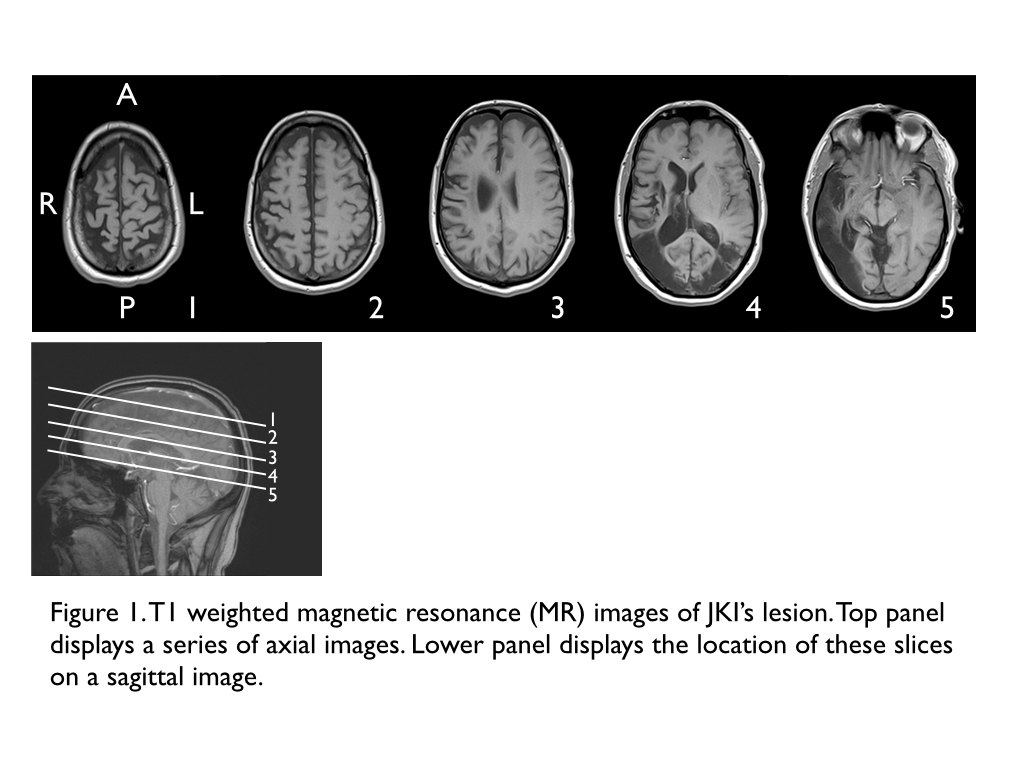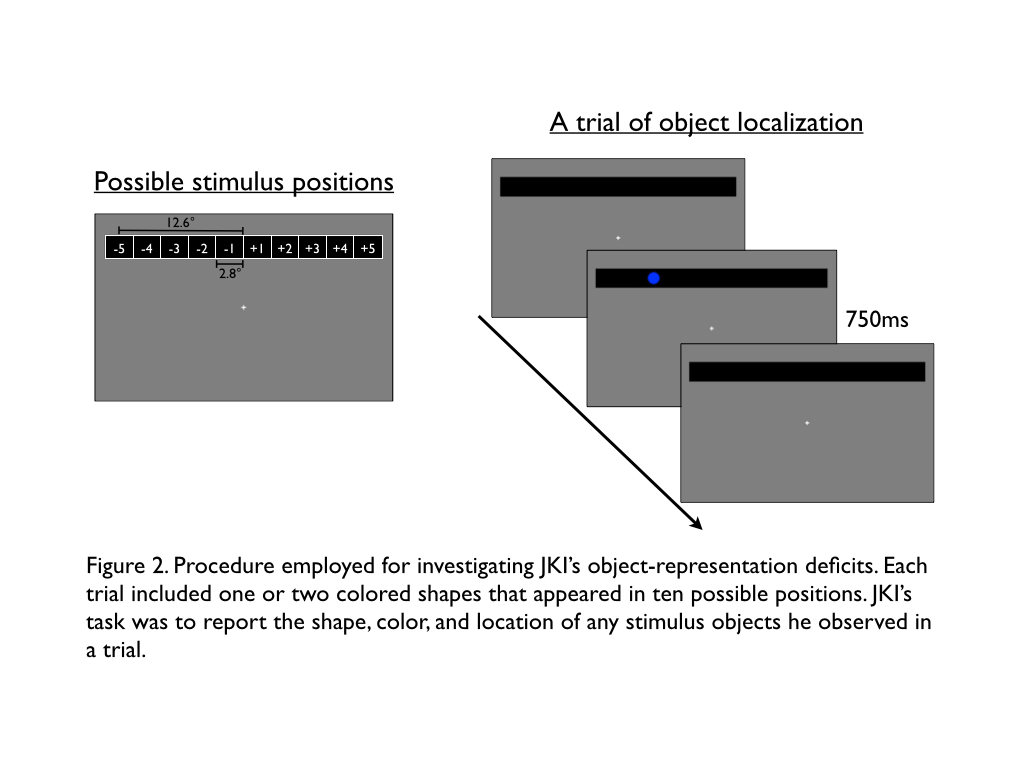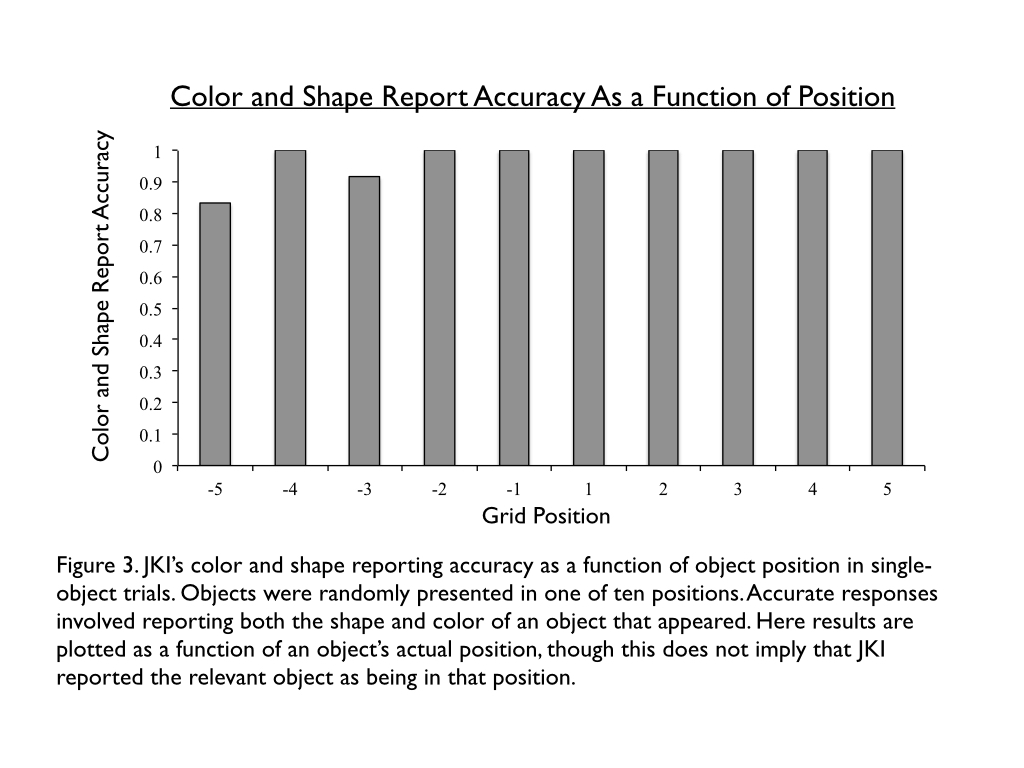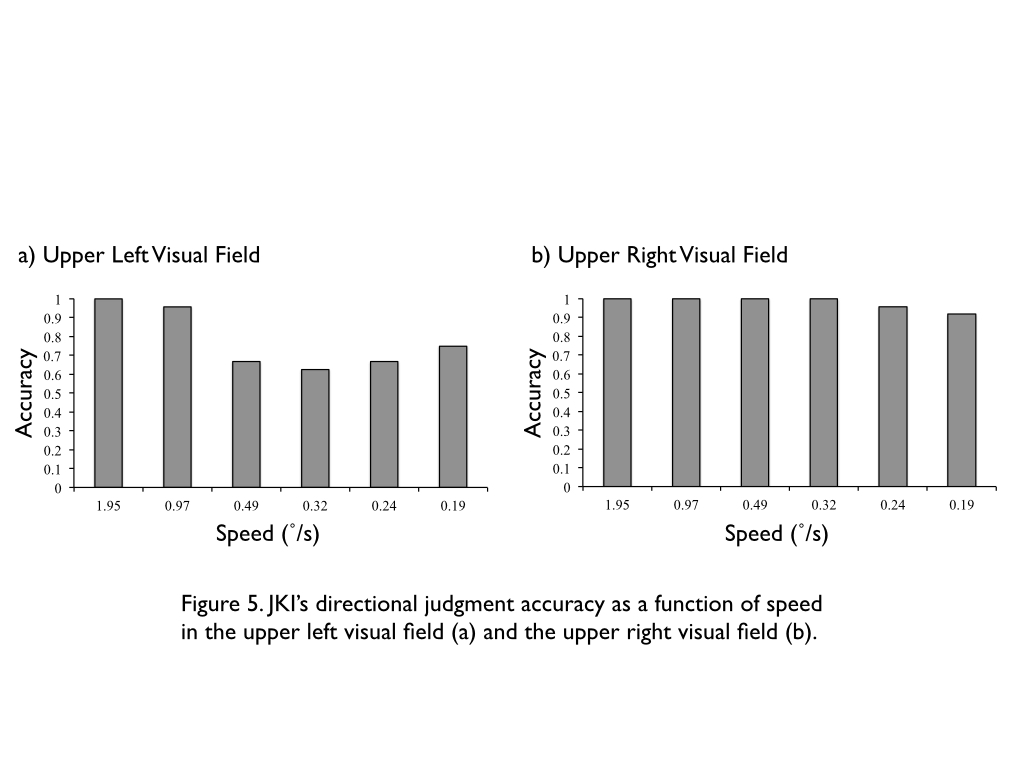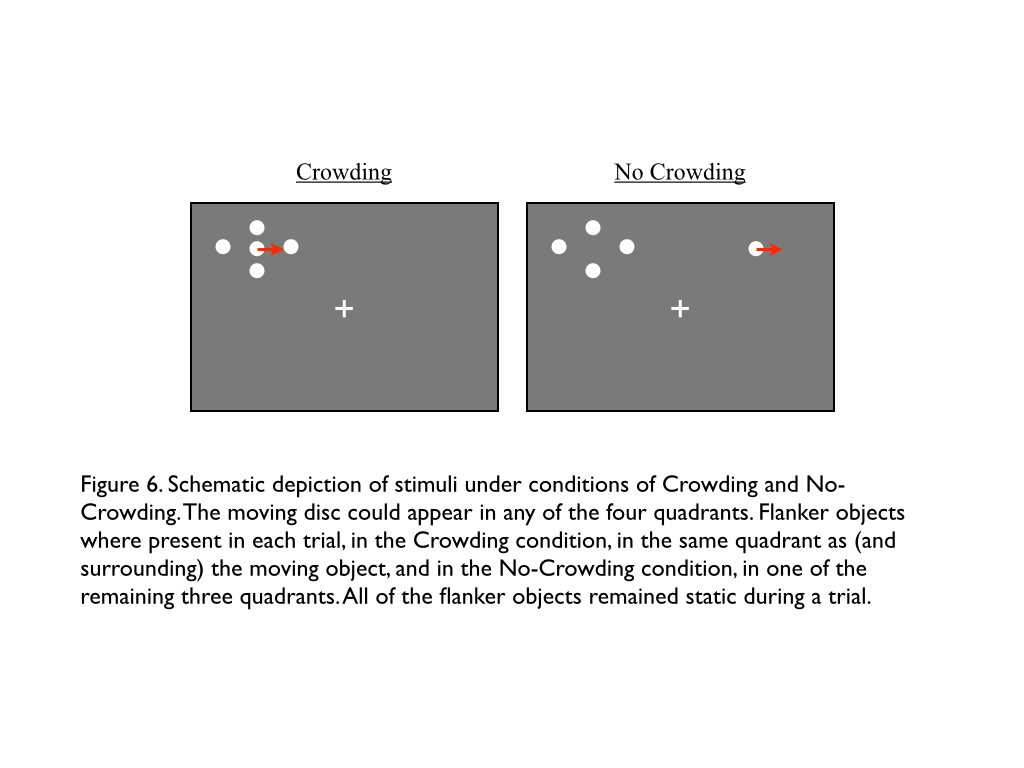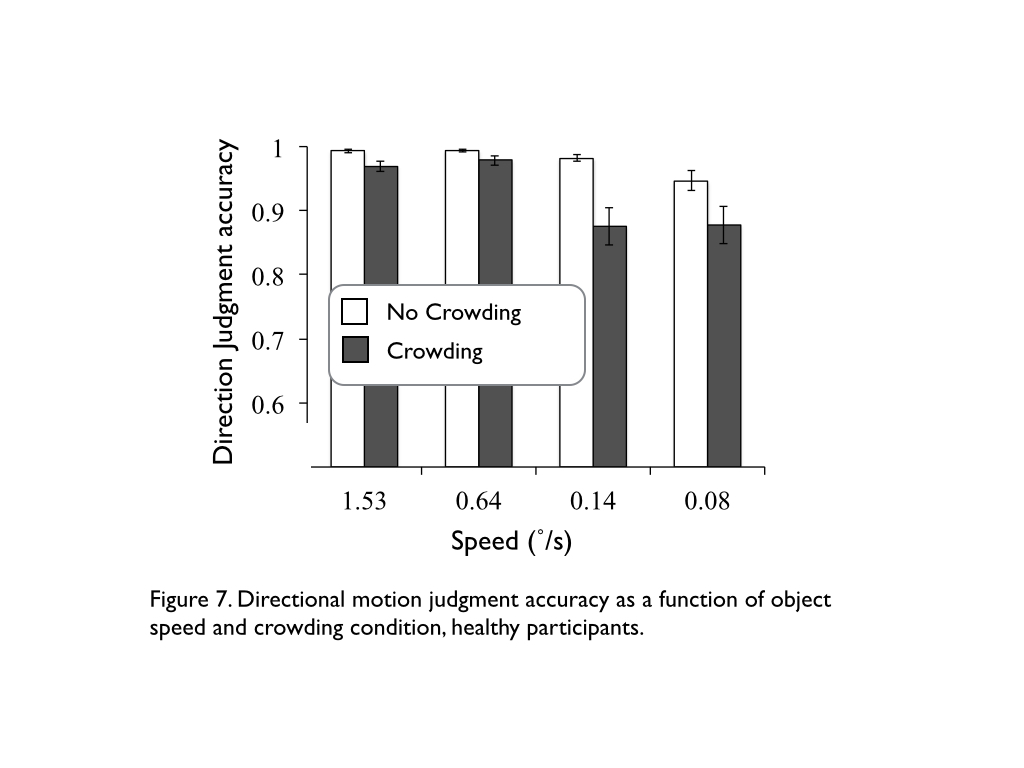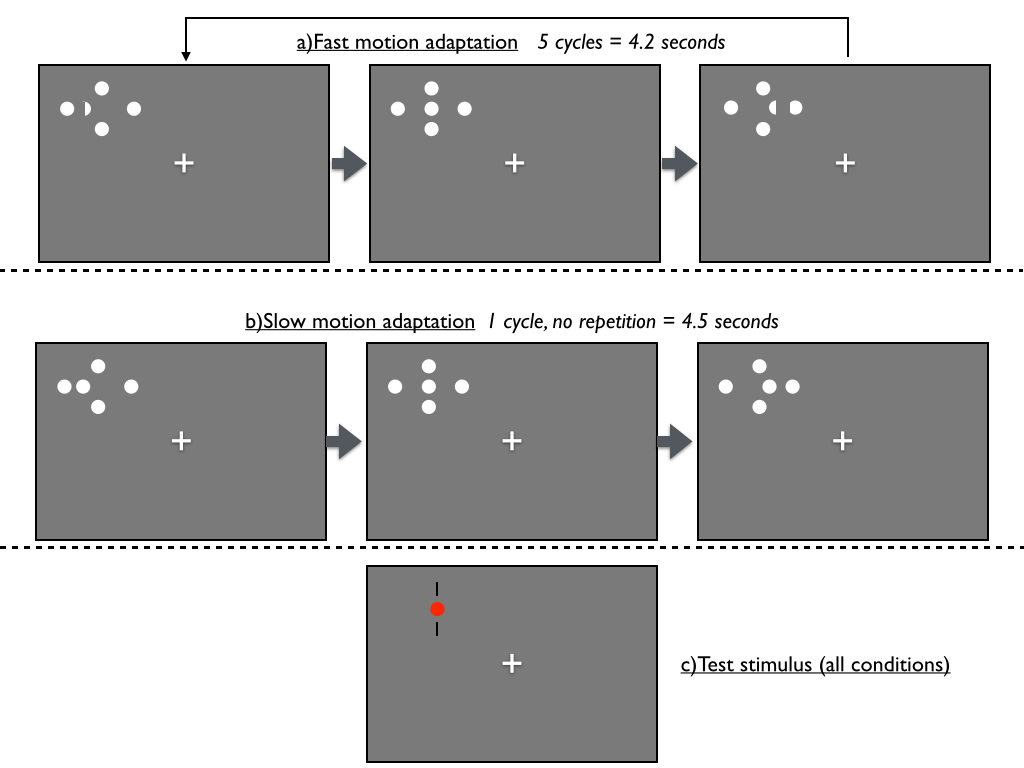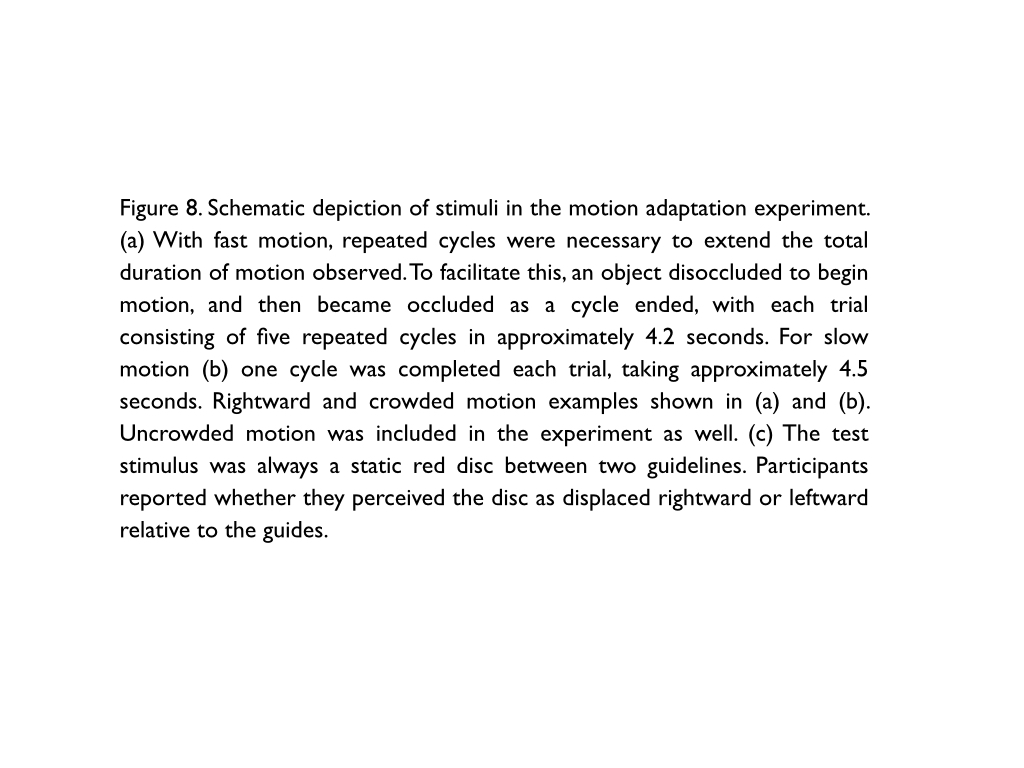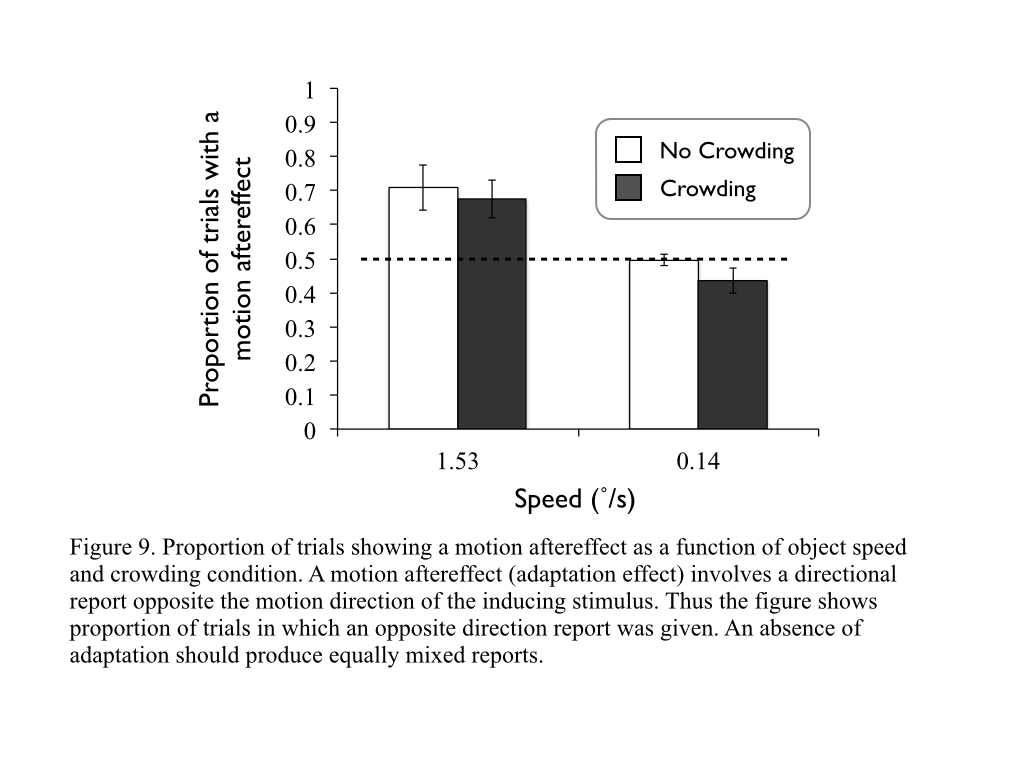A deficit perceiving slow-motion after brain damage and a parallel deficit induced by crowding
Zheng Ma, Michael McCloskey, & Jonathan Flombaum (2015, Journal of Experimental Psychology: Human Perception and Performance, 41, 1365-1375).
Abstract
Motion perception is known to involve at least two kinds of mechanisms, lower-level signal detectors, and higher-level algorithms for comparing object positions over time. When stimulus motion is modal (continuously visible), it is generally assumed that processing via lower-level mechanisms is sufficient to make accurate motion judgments. We investigated the possibility that higher-level mechanisms may also be involved, however, in the processing of slow motion, even when smooth and continuous. This possibility was suggested by results from a brain-damaged patient, JKI, who showed left visual field deficits in both the explicit representation of object position, and judgments concerning the direction of slow, but not fast, smooth motion. We investigated the possibility further by using crowding to induce a behaviorally similar motion perception deficit in healthy observers. Crowding, which is known to impair object position representation, impaired direction judgments for slow, but not faster smooth motion. The results suggest an everyday role for higher-level mechanisms in the perception of slow motion, and they reinforce the taxonomy of motion perception in terms of underlying processing mechanisms as opposed to stimulus properties.
Figures
Demos
Motion Judgment Experiment: The following videos show the four conditions in the motion judgment experiment (Experiment 2) with visually normal observers.
The effects may be phenomenologically salient, but will depend on the size of your monitor and on your distance. Enlarge the video to occupy your display, fixate, and see if you can judge the motion direction of the moving object. With slow, crowded motion you may fell that you can't see motion at all.
Motion Adaptation Control: The following videos show the four conditions in the adaptation experiment conducted with visually normal observers as control for the experiment described above.
Participants were instructed to fixate, and then when a red disc appeared with the two guidelines at the end of a trial, they were asked to report by keypress whether the disc was misaligned to the left or to the right.
